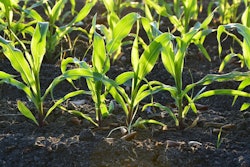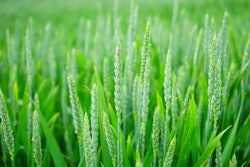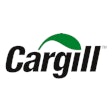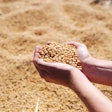The incidence of mycotoxin contamination is on the rise. While recent weather patterns in the U.S. have set a stage conducive to mycotoxins, those involved in the grain industry have more testing methods at their disposal than ever before — and increased testing means more recorded contamination and heightened awareness.
Dr. Duarte Diaz, associate professor and dairy extension specialist, University of Arizona, has partnered with Phibro Animal Health Corp. to host a webinar designed to help better understand the complexity of mycotoxins in feed production. The webinar is now available on-demand at Phibro Academy and can be accessed here.
“We’ve all heard of the impact of tropical climate cycles like El Nino, which can challenge farmers with droughts or floods in areas where these issues are not typical,” says Diaz. “Such weather cycles can shift mold and mycotoxin contaminants, while also forcing farmers to delay harvest — and the longer crops stay in the field, the more susceptible they are to mold and mycotoxins.”
Evolving agronomic practices, such as no-till farming, can also make fields more susceptible to mold and mycotoxins.
“Tilling the soil destroys mold spores by exposing them to the environment, so as you decrease tilling, you’re apt to see a rise in contamination,” Diaz explains.
Fortunately, those who suspect possible mycotoxin contamination have access to a range of testing methods to confirm the absence of mycotoxins — knowledge that will give them peace of mind that their feedstuffs are safe for consumption.
Fully quantitative and semi-quantitative testing are available, but rapid monitoring is the method most farmers will use in the field.
“Rapid monitoring is becoming increasingly accurate and allows a farmer to test a sample for interpretation of what’s in the larger lot,” Diaz says.
While rapid monitoring leaves lots of room for human error, Diaz offers several tips to keep in mind to get the most accurate reading possible.
- Don’t let visual bias determine where you test. Corn that’s covered in mold may not necessarily contain mycotoxins. Likewise, corn that appears healthy could test high in mycotoxins like deoxynivalenol or zearalenone. “It only takes one kernel to wreak havoc,” Diaz warns.
- Increase sample size to decrease sampling variance. Diaz recommends collecting samples from different areas and mixing them together. In addition, increasing your sample size by a factor of five has been shown to reduce variance 60% (Whitaker et al., 2005).
- Analyze beyond the lab results. “Mycotoxin contamination reports are not as important as the story behind them,” Diaz says. “We don’t know why some molds produce mycotoxins, but we do know that they are a response to stress. So, when mycotoxins are confirmed in your grain, you’ll want to determine the stressor.” Changes in temperature, humidity or pH may trigger specific molds to produce mycotoxins.
Mycotoxin Control Strategies
Chances are you’ve experienced mycotoxin challenges. “I’ve never been to a part of the world with no mycotoxin concerns,” states Diaz. “Every country and region have different problems because each plant has unique agronomic practices and a unique environment.”
While mold and mycotoxin control will differ by region and specific challenges, grain and livestock producers alike can minimize the threat of mycotoxin contamination with vigilance and taking a strategic approach to mitigating it in the field, at harvest and in feedstuffs.
From Field to Feedstuffs: Mold and Mycotoxin Control Strategies
Pre-Harvest. Grain farmers can reduce incidence of mold and mycotoxins with insect control, crop residue management (tilling), irrigation and mineral nutrition. They should also consider crop rotation and look at mold-resistant varieties or bio-controls.
Harvest Management. A timely harvest is important, but it’s often at the mercy of Mother Nature. While farmers can’t always harvest at the ideal time, they can compensate with effective cleanup and drying and by implementing good manufacturing processes and strict quality control measures.
Post-Harvest Management and Storage. After harvest, farmers will want to consider decontamination strategies (if mycotoxins are confirmed by testing), along with physical separation of contaminated feedstuffs. Biological decontamination, chemical inactivation and chemo-absorption may help prevent disposal of an entire lot.
Looking to the future, Diaz predicts that biocontrol may play a greater role in preventing molds and mycotoxins before they take hold. “Bio-control allows scientists to isolate mycotoxin-producing strains and replace them with naturally occurring mycotoxins that don’t reproduce,” Diaz says. “This scientific approach can lead to a huge reduction in aflatoxins.”
In the meantime, while mycotoxin testing remains an imperfect science, it does provide farmers with insights into areas of crop stress — knowledge that helps them provide safer animal feedstuffs for greater profit.
Registration for Phibro Academy is free and includes access to Diaz’s webinar and the entire MYCOmpass™ Mycotoxin Webinar Series; individuals can sign up at academy.pahc.com.
About Phibro Animal Health Corp.
Phibro Animal Health Corp. is a diversified global developer, manufacturer and marketer of a broad range of animal health and mineral nutrition products for livestock, helping veterinarians and farmers produce healthy, affordable food while using fewer natural resources.

















